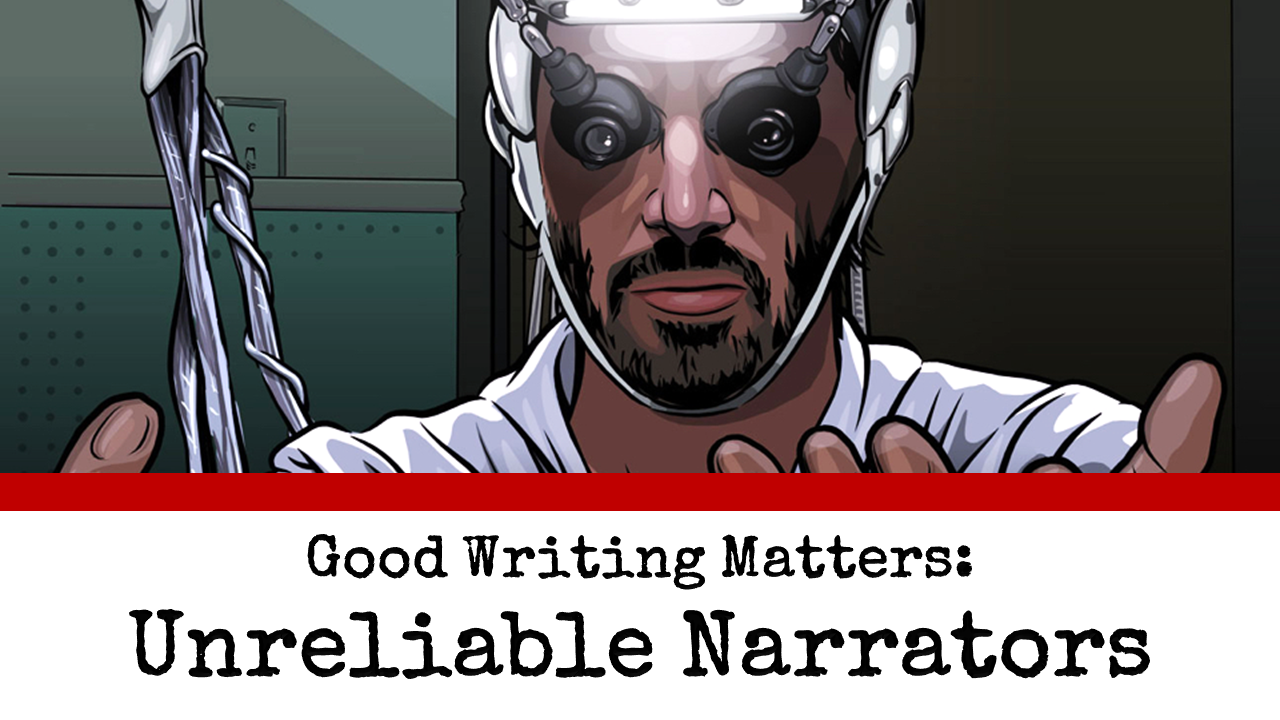My local bookstore owner/writing guru recommended Philip K Dick’s “A Scanner Darkly” to me the other day and was horrified I hadn’t read it yet. The book was harrowing, horrifying, and all round an amazing read. I won’t give any spoilers away, but the story revolves around undercover narcotics agent Bob Arctor as he infiltrates a group of addicts and dealers, trying to find the source of the notorious Substance D. The tragedy of the story is that as Arctor becomes increasingly subsumed into a world of drug-fuelled madness, his own narration becomes more and more surreal, until no-one is sure what is true – even the reader.
While Arctor’s fall left me feeling shattered, I understand why I was recommended this book – it’s an almost perfect example of an unreliable narrator. For those who haven’t come across the term, this is a technique where the narrator’s view and description of events is revealed in some way to not be the actual events of the story, creating the opportunity for a twist ending or for the reader to enjoy putting together the “real” story.
Let’s look at a few examples (SPOILERS AHEAD). A similar story to “A Scanner Darkly” that features mental illness is the Gothic horror classic “The Yellow Wallpaper” by Charlotte Perkins Gilman. I loved this story; it took me a few read-throughs to really draw out all the details. The story is told by a young woman who is being “treated” for her nervous anxiety by her husband – in a room where she thinks the iron rings on the floor and bars on the windows must mean the place was used as some kind of gym… As her sanity decays she becomes convinced there is another woman in the wallpaper, stalking her every movement. Our heroine finally has a mental breakdown, but only the reader understands that this was caused by her husband all but imprisoning her.
Another unreliable narrator method is amnesia. My favourite example on film is “Memento,” featuring Leonard Shelby, a man bent on revenge who cannot hold any short-term memories. The story is told in disjointed, non-chronological scenes, allowing for the truth of Shelby’s actions to slowly be revealed as a helpless, unknowing assassin. An example of this in print is “Chasm City” by Alistair Reynolds, where Tanner Mirabel, a mercenary similarly out for revenge, is suffering from space amnesia and an “indoctrinational” virus dedicated to the life memories of infamous cult leader Sky Haussman. However, as Tanner navigates the futuristic Chasm City his memories begin to reassert themselves, and he is led to the horrifying realisation that the memories of the mass murdering Haussman might not be synthetic implants after all.
A final example of an unreliable narrator is my personal preference, the expert liar. Think “The Usual Suspects” character Verbal Kint, spinning a tale of the mysterious Keyser Söze, a perfect story that no-one realises is a lie until the closing minutes of the film. A recent book that sticks out for me is “Alpharius: Head of the Hydra,” by Mark Brooks, a confession by the head of the secretive sci-fi military organisation the Alpha Legion. This futuristic group specialise in espionage and deceit, and the opening line of the book is literally “I am Alpharius. This is a lie.” From there, the reader is never sure that the story they are reading really is the revelation of the mysterious Alpharius, or just another of his plots.
I’ve given writing an unreliable narrator a try and I have to say, it’s a lot harder than it looks. I can’t say this makes me too unhappy – coming to grips with a new technique is half the fun of writing.
If you have a favourite unreliable narrator, please leave a comment below, and if not, have a great week reading (and writing)!

Leave a Reply